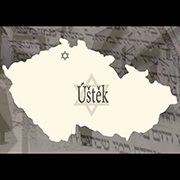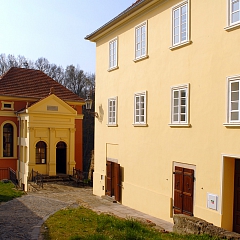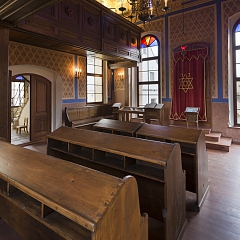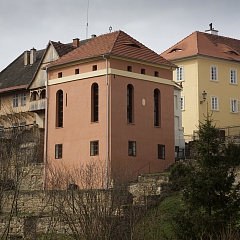
-
Úštěk
The Úštěk synagogue
The great fire of 1773 destroyed a wooden synagogue of unknown age. After the fire, a wooden school was built at the end of the Jewish street. In August 1794 the Jewish community asked the town for the donation of quarried stone for the construction of a new synagogue on the site of the school. The unconventional neo-classical tower-like structure, built on a square foundation, was completed that same year. Unique features are the classroom and teacher’s quarters located in the buildings basement. In 1849, community chairman Benjamin Schwarz decided to renovate the synagogue according to a plan by Wenzl Jahn. During renovations in 1851, a neo-Renaissance entrance hall was added on the northern side to cover the stone stairwell to the gallery and the entrance to the main hallway. The vaulted schoolrooms and the teacher’s quarters were built into the synagogue’s basement. The building was also raised by a 1.2m high addition that further accentuated its characteristic tower-like shape. The women’s gallery in the main hall was enlarged, and the synagogue was decorated with new decorative wall paintings featuring neo-Renaissance and Moorish motifs. The synagogue’s interior furnishings were destroyed during the war. Later, the building deteriorated, the roof collapsed, and the building was slated for demolition. In 1993, it was taken over by the Federation of Jewish Communities, which renovated the building in 1995–2003 and 2010–2014. The synagogue was re-opened to the public in June 2014.



